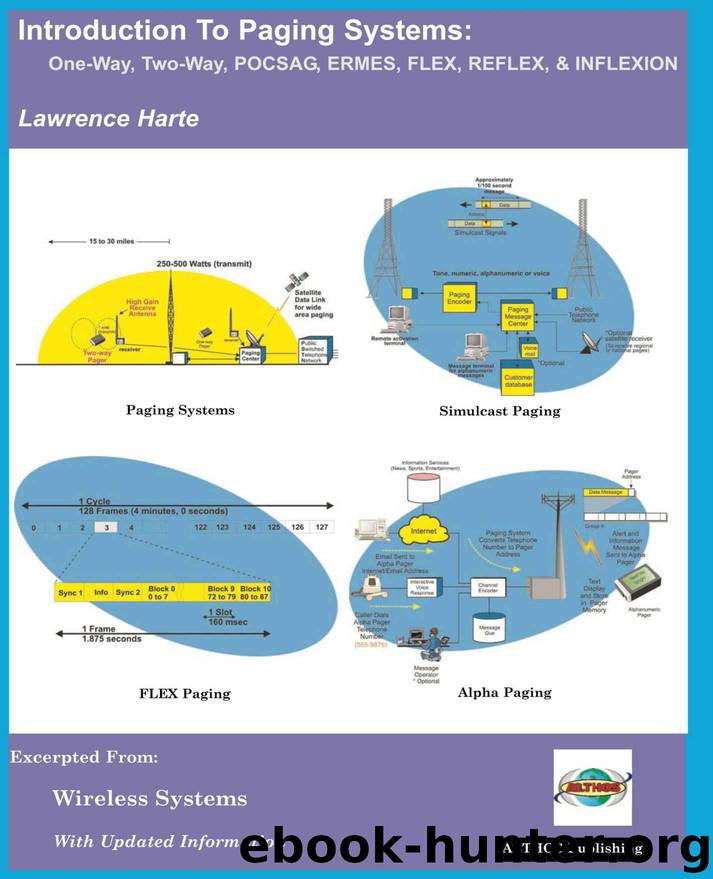Introduction to Paging Systems: One-Way, Two-Way, POCSAG, ERMES, FLEX, REFLEX & INFLEXION by Lawrence Harte

Author:Lawrence Harte [Harte, Lawrence]
Language: eng
Format: azw3
Publisher: UNKNOWN
Published: 2017-03-20T04:00:00+00:00
Figure 1.6, ERMES Modulation Table The ERMES radio channel is divided into sequences of 60 seconds and these sequences are divided into 60 cycles. The sequences are synchronized to coordinated universal time (UTC). Each cycle is further divided into subsequences of 12 seconds each. Each subsequence is divided into 16 batches (paging groups) and each batch contains a synchronization, system information, address, and text part.
Figure 1.7 shows the basic structure of the ERMES radio channel. This diagram shows that the radio channel is divided into sequences of 60 seconds and each sequence is divided into 60 cycles. Each cycle is further divided into subsequences of 12 seconds each which is divided into 16 batches (paging groups). This example shows that each batch contains a synchronization, system information, pager address, and data (text) part.
Download
This site does not store any files on its server. We only index and link to content provided by other sites. Please contact the content providers to delete copyright contents if any and email us, we'll remove relevant links or contents immediately.
| Automotive | Engineering |
| Transportation |
Whiskies Galore by Ian Buxton(41524)
Introduction to Aircraft Design (Cambridge Aerospace Series) by John P. Fielding(32882)
Small Unmanned Fixed-wing Aircraft Design by Andrew J. Keane Andras Sobester James P. Scanlan & András Sóbester & James P. Scanlan(32569)
Craft Beer for the Homebrewer by Michael Agnew(17927)
Turbulence by E. J. Noyes(7690)
The Complete Stick Figure Physics Tutorials by Allen Sarah(7135)
Kaplan MCAT General Chemistry Review by Kaplan(6584)
The Thirst by Nesbo Jo(6432)
Bad Blood by John Carreyrou(6270)
Modelling of Convective Heat and Mass Transfer in Rotating Flows by Igor V. Shevchuk(6219)
Learning SQL by Alan Beaulieu(6027)
Weapons of Math Destruction by Cathy O'Neil(5819)
Man-made Catastrophes and Risk Information Concealment by Dmitry Chernov & Didier Sornette(5639)
Digital Minimalism by Cal Newport;(5383)
Life 3.0: Being Human in the Age of Artificial Intelligence by Tegmark Max(5181)
iGen by Jean M. Twenge(5150)
Secrets of Antigravity Propulsion: Tesla, UFOs, and Classified Aerospace Technology by Ph.D. Paul A. Laviolette(4974)
Design of Trajectory Optimization Approach for Space Maneuver Vehicle Skip Entry Problems by Runqi Chai & Al Savvaris & Antonios Tsourdos & Senchun Chai(4837)
Electronic Devices & Circuits by Jacob Millman & Christos C. Halkias(4739)
